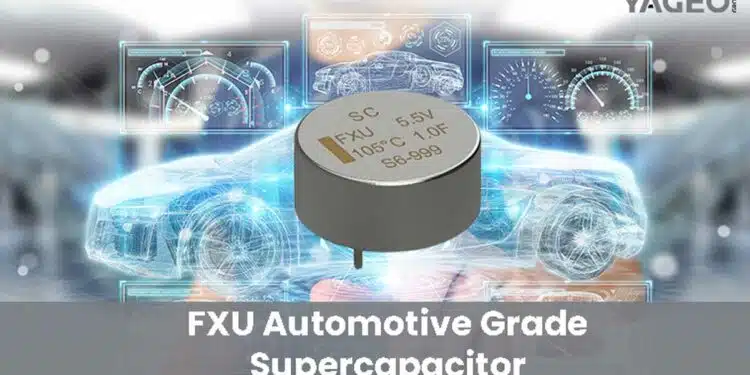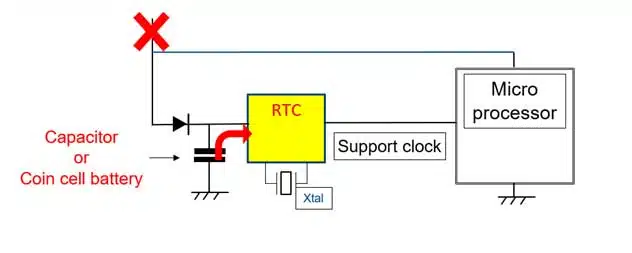KEMET, YAGEO Group announces release of its latest advancement in energy storage technology—the FXU Series automotive supercapacitors.
Designed specifically for the rigorous demands of automotive applications, the FXU Series provides superior backup power solutions with a remarkable 1F capacitance, a rated voltage of 5.5V, and an operational lifespan of 1000 hours at temperatures up to 105ºC.
Meeting the Challenges of Modern Automotive Environments
As vehicles become increasingly connected and autonomous, reliable system backup during power loss is critical. Traditional electrolytic capacitors and batteries often fail under extreme conditions due to high temperatures and humidity, leading to increased resistance and degraded performance. The FXU Series Supercapacitors address these challenges with advanced materials and design, ensuring long-term stability even in harsh environments.
Supporting the Rapid Growth of the Electric Vehicle (EV) Market
The booming EV sector demands robust energy solutions to manage complex systems like motor drives, battery management systems (BMS), and charging infrastructure. Supercapacitors play a pivotal role in maintaining system integrity, especially as backup power for Real Time Clocks (RTC) near the CPU, ensuring data preservation during power interruptions.
In automotive applications, system backup power is becoming increasingly critical during a power loss. The automotive environment, however, is extraordinarily harsh, with high temperatures, humidity, and vibration. Traditional aluminum electrolytic capacitors and batteries will dry out over time under high-temperature conditions, resulting in increased ESR series resistance and degradation of capacitance.
Specialized Supercapacitors can be used in these situations to free design engineers from the restrictions imposed by finite battery lifetimes. In addition, the supercapacitor’s benign open-circuit failure mode contrasts with typical short-circuit battery failures that may result in outgassing or ignition.
As such, Supercapacitors are the most cost-effective alternative to small backup batteries and can store enough energy to provide backup for durations ranging from a few seconds to several days, depending on the type of load and current demand.
Advantages of the FXU Series Supercapacitors
- High Temperature and Humidity Resistance: Reliable performance in extreme automotive conditions.
- Extended Lifespan: Superior cycle life reduces maintenance costs compared to traditional batteries.
- Safety and Reliability: Benign open-circuit failure mode minimizes risks associated with battery short circuits.
- Cost-Effective: Eliminates the need for frequent battery replacements, offering long-term savings.
A Future-Ready Energy Solution
KEMET’s FXU Series Supercapacitors are engineered with cutting-edge aqueous electrolytes, providing the high voltage tolerance, durability, and environmental resilience necessary for next-generation vehicles and other high-reliability applications.































